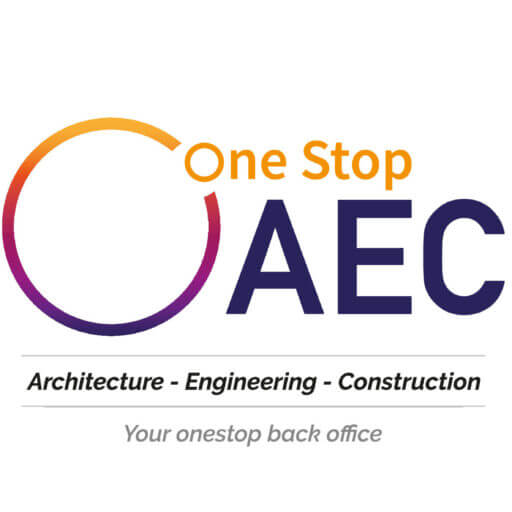
Role of BIM in the Digitization and Transformation of the Construction Industry
The construction industry is adopting digitization to bring efficiency in their operations, work-process and secure new innovative solutions to handle construction challenges. Almost 7.7 percent of the construction enterprises, exercising digitization on an index of medium to high. Integration of digital technologies like BIM, robotics, machine learning is gradually rising.
Technology has replaced manual 2D drawing and drafting techniques with CAD. Initially, BIM got introduced as an information-rich 3D modeling technology. BIM’s collaborative working style and ability to support various software, technology, and construction engines, triggered the digital strategy in an organization and increased its global adoption.
BIM’s accurate virtual 3D model for designing, common data environment, cost management, construction management, facility operations, etc., has eased the work of architects, engineers, contractors, and project owners.
BIM implementation can be witnessed in the form of the world’s largest airport, Istanbul New Airport, by accomplishing the strategic and operational goals in terms of value and time management. Europe is developing its large construction project, Crossrail, a 73-mile railway line, using 3D BIM modeling and centralized data in the BIM architecture.
Traditional Construction Industry

Until the end of the 20th century, the traditional construction methods and techniques got used on a large scale. The conventional method used several techniques to create the building structures. And all based on a hands-on -approach or linear method. The construction activity was carried out at the building site using raw materials.
Some examples of traditional construction techniques are:
Brick and Block
Brick and Block was the most common method used for building houses. First, an internal blockwork wall got developed and surrounded by external walls of brick or stone.
Timber Frame
In the Timber frame method, an internal structure was created with a rigid timber frame and covered or draped with brick and stone for the final look.
Steel Frame
In this technique, a steel frame got used to create the internal structure, and the external wall made using brick and stone.
In linear construction, each step needs is complete before starting the next. And it starts with planning, design, approval, and site preparation. And then, the foundation gets constructed, followed by walls and roof. The building’s interior gets created. And a snag-list is developed to resolve all minor issues before the final delivery of the building.
Since all the construction activity is performed on-site, the conventional method is highly dependent on the weather conditions. The quality of construction gets impacted due to weather damage.
Eventually, traditional construction introduced 2D CAD for designing. Limited information sharing and communication among the design team create iterative loops and rework. Before the final approval of the architect and owner, the design data has to go in batches through several loops among the team. Sometimes, the data becomes obsolete due to untimely exchange among the members.
Documentation prepared on technical drawings has a high risk of multi-disciplinary collision. The reason is the limited capabilities of the clash detection tools and inaccuracy of data.
Modifications are difficult to make once the concrete is cast. And it is difficult to assure the quality control of finished surfaces.
The erection of formwork is time-consuming. The entire construction process takes a longer time to complete.
Conventional construction requires a large team of higher-skilled designers and builders, and labor numbers.
These methods are not environment friendly, creates wastage of raw materials, and are more hazardous as entire construction activity is carried out at the site. It also leads to cost-overruns.
BIM Adoption and the Beginning of Digitization

The civil, architectural, and construction industry is experiencing the pressure of change from several directions to adopt digitization. The driving forces are the rise in clients’ demand and their expectations, tech-savvy professionals, booming start-ups, and an increase in large infrastructure projects.
Before developing a digital strategy, a construction organization needs to assess its current maturity level and digitalization stake. Such as new technologies and offers, client expectations, and how competitors are evolving.
Introduction of BIM
BIM vastly impacted the AEC sector by transforming its working process and structure. BIM integrated project delivery helped increase productivity with the optimized construction process. And it also strengthened the owner. BIM can get considered the backbone of digital strategy as it improved the entire construction value chain, i.e., design, construction, operations, and maintenance.
BIM’s common cloud-based data environment gave real-time data access to the project members and the client. Digitalization and real-time data manage the transparency of the project information. Accessibility of the data in an integrated manner controls the project performance, helps in facilities maintenance and quality control.
Several countries have adopted BIM through mandatory directives since 2007. For example, Norway and Netherlands made BIM mandatory for public sector projects.
The EU’s BIM working group defined four pillars of BIM; Process, People, Policy, and Technology. Here, the process includes the standards (national and international), methods, and procedures. People define leadership, collaboration, owner involvement, and skills.
The policy is standards, project guidelines, legal and contractual procurement, etc. Technology is the BIM models, simulation, interoperability between different software.
There are several construction standards at the regional, national, and international levels. To promote BIM, an organization like the British Standards Institution (BSI) of the UK developed several guidelines and standards for BIM implementation. The UK follows the UK BIM Framework based on the ISO 19650 standard.
BIM-based on ISO 19650 is known as BIM stage 2 or BIM 2.0. BIM 2.0 helps the entire industry agree on a common definition and process to increase the efficiency and quality of its implementation process.
BIM 2.0 is a federated model. Here, the teams can coordinate and control the project discipline clashes, perform analysis and project coordination. And it is also used for time management, cost analysis, facility management, and energy analysis.
Key Benefits of BIM Implementation ![Key Benefits of BIM Implementation]()
Detailed and information-rich 3D model
The detailed 3D BIM model gives an advantage to the architects to experiment with the design and identify potential issues before finalizing the design. All the project members can access the 3d design model and its information. It helps them to give their suggestions for an optimum design.
Effective communication and collaboration
All the information and ideas related to the project are stored in a shared location and accessed by the architects, clients, contractors, and engineers. Real-time and updated information makes the communication and collaboration between the teams effective and resolves the conflicts on time.
High-quality building structure
BIM helps to develop a detailed and accurate model. Any clash or error gets identified earlier, which helps create a high-quality building structure.
Enhances safety
BIM models allow the architects to identify the construction hazard and prevent them by making changes in the design. Contractors can lead and instruct the team to follow the safety work process at the site.
Saves cost
Earlier clash detection helps in preventing costly reworks at the construction site. An accurate model also supports the procurement team to estimate the number of materials required and reduces its wastage.
How BIM Implementation Brought Change in the Construction Industry

BIM has shifted the company’s culture, changed its behavior, work process, and operations. BIM’s collaborative environment involves the entire project team from architects, engineers, contractors, owners to suppliers and sub-contractors.
The technology has brought a fundamental change in the entire construction process from initial design, estimating, scheduling to project management and operations.
Design
Traditionally, architects and engineers developed detailed design drawings and other documents or renderings on 2d paper or sketch. The quality of these documents was a significant issue due to data omission or error. Construction personnel has to reconcile with architects if there was any error which was a time-consuming process.
BIM has successfully handled this issue with its detailed 3d model design and common data environment. Access to the updated data and model helps contractors detect the constructability issue in real-time and saves time and cost.
Estimating
In conventional methods, preparing a detailed estimate and under a specified time required a person with the necessary skills and experience. BIM has eased the process of estimation with its object-oriented environment. The building components in the BIM model get recognized as objects throughout the process with their physical properties. It also allows adding any other metadata like price as the object properties. It helps the software to identify the particular object and its quantity at the end.
Scheduling
Traditional scheduling involved a person familiar with the task in preparing the task order and its time of completion. BIM’s fourth dimension has overcome this gap by assessing the work task and relating it to time, i.e., duration and sequence.
Managing the project
While managing and monitoring the project, several challenges like design changes, unforeseen conditions, conflicts, etc., were faced traditionally. BIM has reduced these challenges to a large extent by identifying the potential conflicts or clashes, design errors at the earlier stage.
Operations
BIM continues to offer an advantage even after the construction gets over. The owner can get the building model used in construction and access all the building information for maintenance, analyzing equipment layout, or improvement.
BIM Changing the Face and Processes of Construction
The advent of BIM leading to a significant transformation of the construction Industry. Project holders can exchange project data through a common file format, the constructability of the project is increasing, field coordination problems are decreasing, and building life is rising.
As per the NBS report, BIM awareness is rising as 62 percent of the construction firms are aware of the technology and utilizing it in any one of their projects.
BIM 2.0 is transforming the industry towards digitization by handling several challenges and roadblocks.
OneStop AEC (OSA) is a leading BIM service provider, offering high-end BIM solutions and related services. The BIM experts at OSA help develop BIM-specific processes and workflow, allowing effective BIM implementation in client’s projects at all stages. Our BIM implementation services include effective process management, management of complex projects, expertise in international standards of LOD for different stages of design, 3D visualization, scheduling, estimation, and others. Contact us to get the best BIM implementation services with experts and improve your productivity and ROI.






0 comments
Write a comment